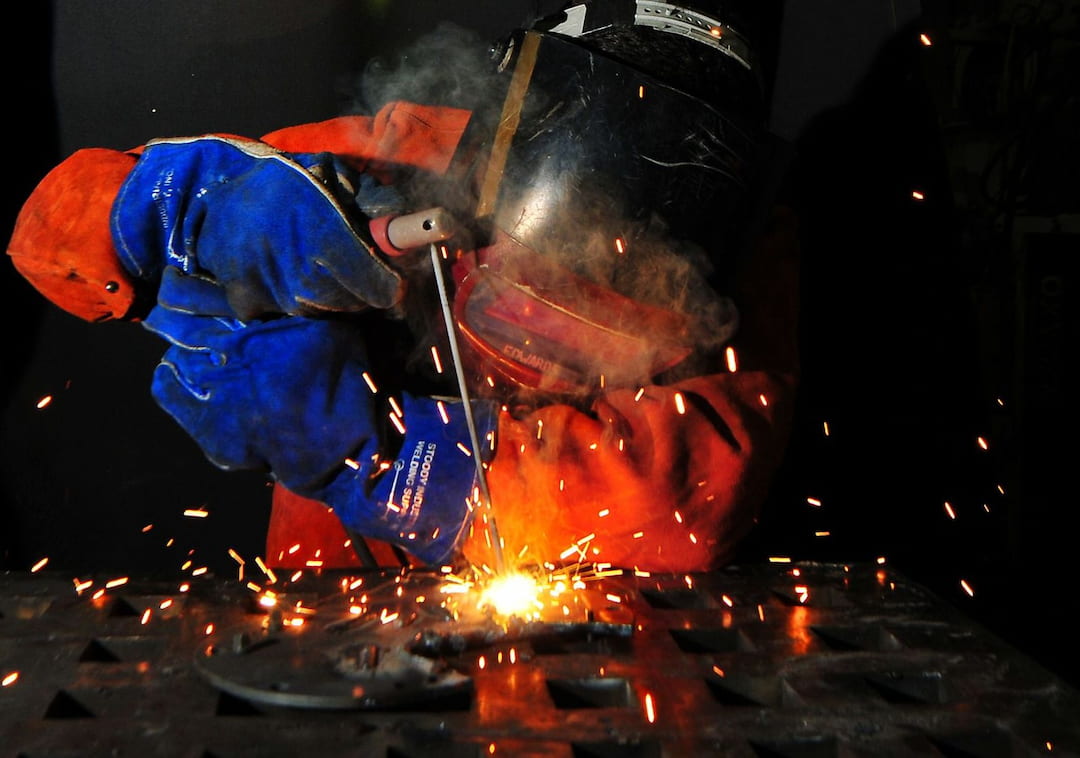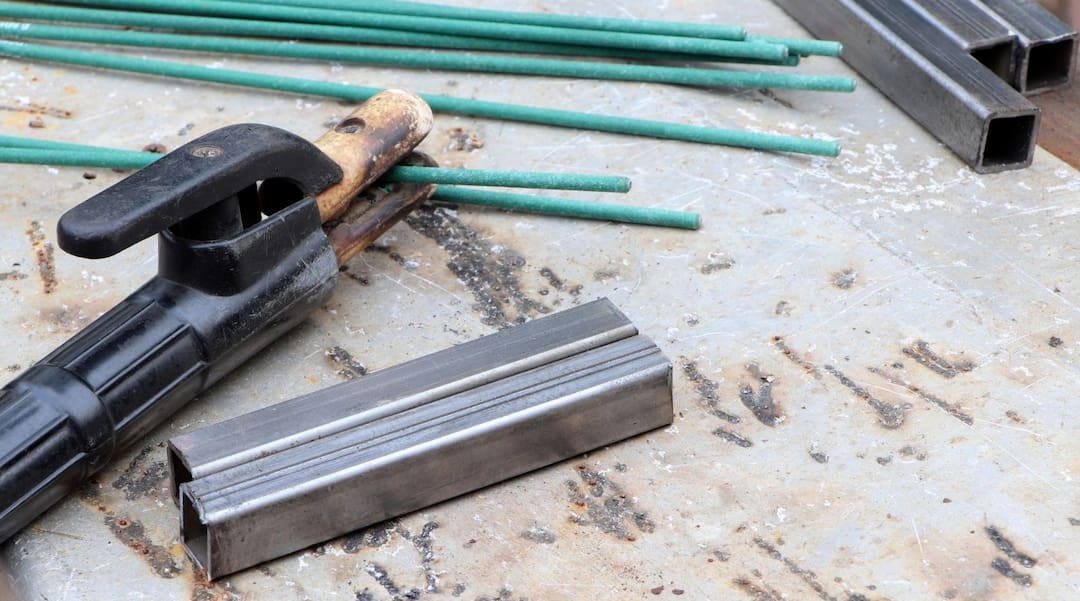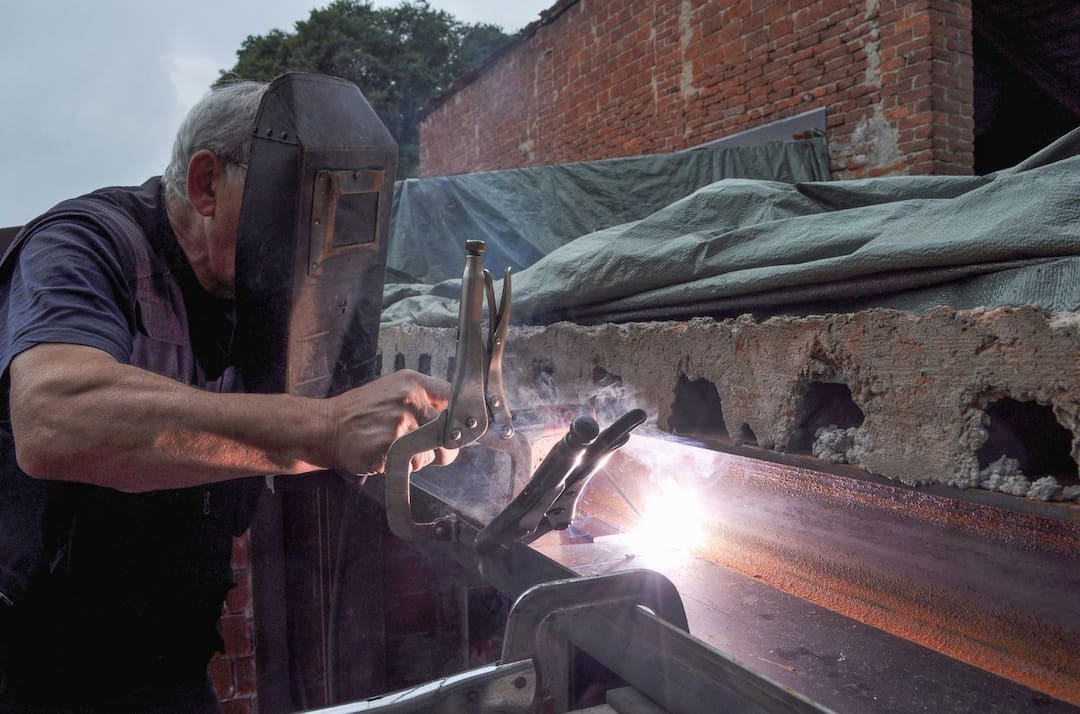Are you looking to take on a project that involves stick welding stainless or carbon steel? Stick welding carbon steel is the perfect place to start if you are learning, and it can yield great results with minimal investment of time and money.
Table of Contents
In our blog post, we’ll provide you with an in-depth look at stick welding for stainless steel so that no matter if you are an experienced stick weld pool and welder or new to the whole stick welding and stick welder craft, your project will have a professional finish.
The Basics of Stick Welding Stainless Steel
Stick welding is a process of welding that utilizes an electric arc between weld metal of the electrode and the metal being welded. The rod electrodes for stick welding together are usually made from stainless steel and come in other forms of stainless steel continues various sizes and types for different projects.
The first step in stick welding stainless steel is choosing the right electrode type. Make sure you select one compatible with your metal and the thickness of the stainless steel. You don’t want to use too small an electrode as it won’t provide enough heat, which can lead to poor welds.
Next, you’ll need to adjust the polarity of the electrodes in your arc welding machine. The correct polarity of electrodes will ensure that the arc generated is focused on the area between the electrode and the surface of the metal being arc welded.
Set the amperage to a suitable level for your project. Too much heat or amperage can cause the electrodes to spatter and produce poor welds, while too low can heat up alloy too little heat and can mean the electrode won’t even penetrate the metal.

Preparing the Materials for Stick Welding
Before you start stick welding stainless steel, it is important to properly prepare the materials. First, ensure the metal is clean and free of debris or dirt. Then determine if any preheating is required for the specific type of stainless steel used in the project.
Preheating the electrodes can help the electrodes reduce warping and cracking during the welding process. It’s also important to check the fit-up between the electrodes the two pieces of filler metal, as any gaps can lead to corrosion resistance to other metals and poor welds. A flux core electrode is also recommended for better penetration of filler metal and smoother welds.
Always protect your eyes with your safety glasses, goggles or a welding helmet while stick-welding stainless or carbon steel together. By taking these steps, you will ensure that your project turns out great and that maintenance and repair work done with you stay safe.
Setting up Your Workspace and Tools
When getting ready to begin your work, it is important to establish your workspace properly. Locate a well-ventilated area and ensure that the ground is clear of any debris. Position your welding screen at a safe distance of at least three feet to avoid the risk of sparks causing a fire hazard.
Arrange your tools in an organized manner for easy accessibility. Make sure to have a wire brush, chipping hammer, and stainless steel wire brush readily available for the cleanup process that follows shielded metal arc welding, MIG welding, or TIG welding. Additionally, remember to have the necessary shielding gas handy if you are performing MIG welding.

The Techniques for Successful Stainless Steel Stick Welding
Stick welding stainless steel can be challenging, but the right techniques and preparation can result in successful projects. First, select the right electrode type and size for compatibility with your metal and the thickness of the stainless steel.
Adjust the polarity of your machine and set the amperage level accordingly. Prepare materials by cleaning them free of debris, preheating if necessary, and checking fit-up. Set up the workspace in a well-ventilated area with your tools laid out flat for easy access.
Finally, don’t forget to wear safety glasses, goggles or a stick welding and helmet to protect your eyes from sparks and heat. With these tips and proper stick welding and techniques, you can stick-weld stainless steel successfully and create great results.
Pros & Cons
Welding stainless steel can offer several advantages, but it also presents some challenges. Here are the pros and cons of welding stainless steel:
Pros
1. Corrosion resistance: Stainless steel is highly resistant to rust and corrosion, making it suitable for various applications in corrosive environments.
2. Aesthetic versatility: Stainless steel offers an attractive and modern appearance, allowing for versatile design options and decorative applications.
3. Durability: Welded stainless steel joints provide long-lasting strength and durability, making them ideal for structural applications that require reliability.
4. High strength-to-weight ratio: Stainless steel offers excellent strength-to-weight ratio, allowing for strong and lightweight welded structures.
5. Hygienic properties: Stainless steel is non-porous and easy to clean, making it suitable for industries such as food processing, healthcare, and pharmaceuticals.
6. High-temperature resistance: Stainless steel can withstand high temperatures without significant deformation or loss of mechanical properties, making it suitable for heat-intensive applications.
7. Low maintenance: Stainless steel requires minimal maintenance, reducing long-term costs and efforts for upkeep.
8. Wide temperature range: Stainless steel remains stable across a broad temperature range, maintaining its structural integrity in extreme conditions.
Cons:
1. Sensitivity to heat distortion: Stainless steel has a lower thermal conductivity than other metals, making it more susceptible to heat distortion and warping during welding if proper techniques and precautions are not followed.
2. Specialized equipment and expertise: Welding stainless steel requires specific equipment, such as TIG or specialized MIG setups, and proper knowledge of welding techniques. This may require additional training, expertise, and investment in equipment.
3. Chromium carbide precipitation: During welding, chromium can combine with carbon and form chromium carbides, reducing the corrosion resistance of the welded joint. Proper welding procedures, such as using low-carbon filler metals, must be followed to mitigate this issue.
4. Higher cost: Stainless steel is generally more expensive than other common metals, which can increase the overall cost of welding projects using stainless steel.
5. Sensitivity to contamination: Stainless steel is prone to contamination during welding, especially from carbon steel particles or contaminants like grease, oils, or dirt. Strict cleanliness measures are necessary to avoid contamination and maintain the integrity of the weld.

The Basics of Stick Welding Stainless Steel
Stick welding is a process of welding with electrodes that utilizes an electric arc between the electrode and the metal being welded. It can be used to weld various grades of metals such aluminum and stainless steel, but it requires the right size and type of electrode compatible with the metal grades and thickness, the proper polarity setting on the machine, and the correct amperage level.
To ensure a successful weld, clean the materials, preheat if necessary, and use electrodes with a flux core electrode for durability and better penetration. Setting up the workspace in a well-ventilated area is also important to avoid fire hazards, and safety goggles should always be worn.
Stick welding stainless steel can be challenging, but it can yield excellent results with the right techniques. You can successfully weld stainless steel for your project with the proper preparation, tools, proper welding techniques, stick welding techniques, and knowledge. This guide has laid out some basics to help get you started.
FAQS
What tools are needed for stick welding stainless steel?
You’ll need a welding machine, the right size welding rod, electrode type for the metal and thickness of base metal or stainless steel being welded, safety goggles or a welding helmet, a wire brush and wire brush for post-welding cleanup, and a chipping hammer.
What are the challenges of stick welding stainless steel?
The challenges of stick welding stainless steel include needing specialized tools and knowledge, difficulty ensuring a perfect weld, durability and the expense of materials, welders and equipment.
What are some tips to ensure a successful weld?
Some tips to ensure successful welding include selecting a welding rod with the right electrode type and size for compatibility with your metal, adjusting the polarity on your machine and setting the amperage level accordingly, preheating materials if needed, and wearing safety goggles or a welding helmet.
